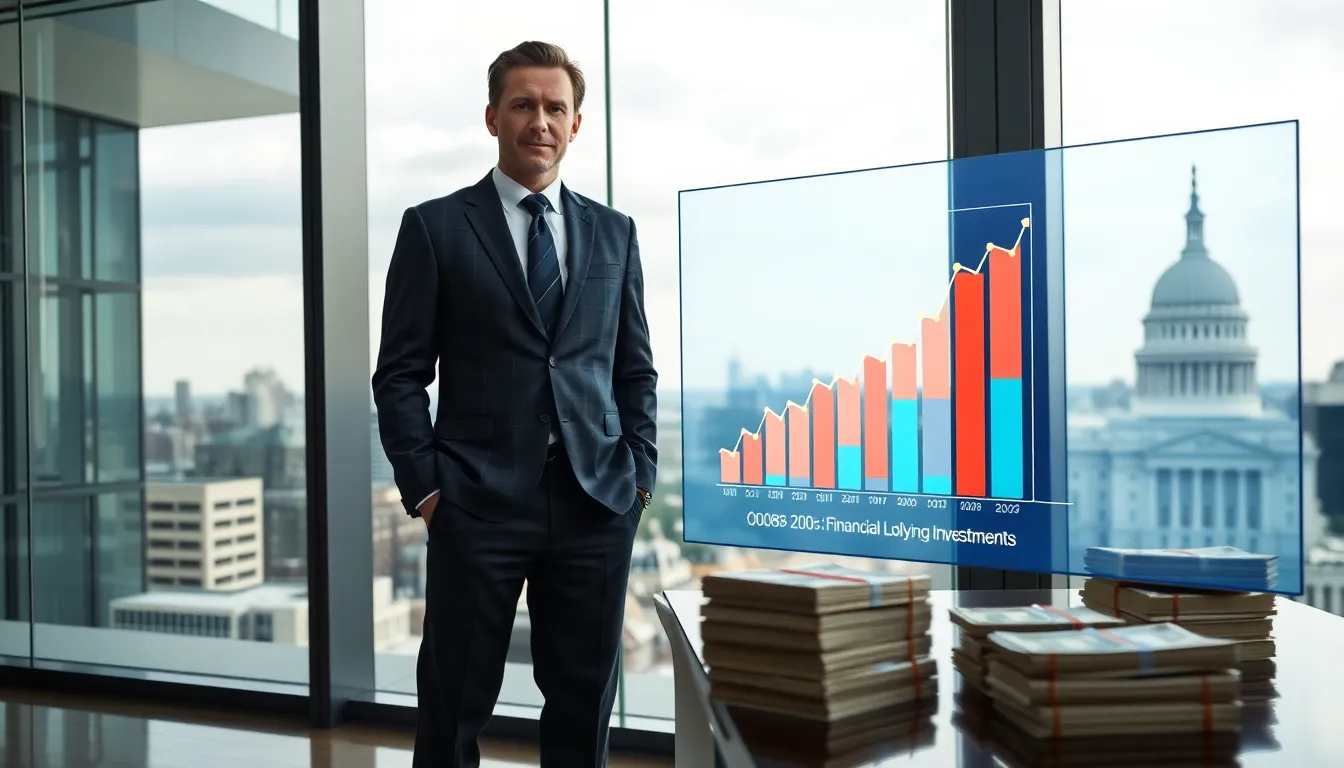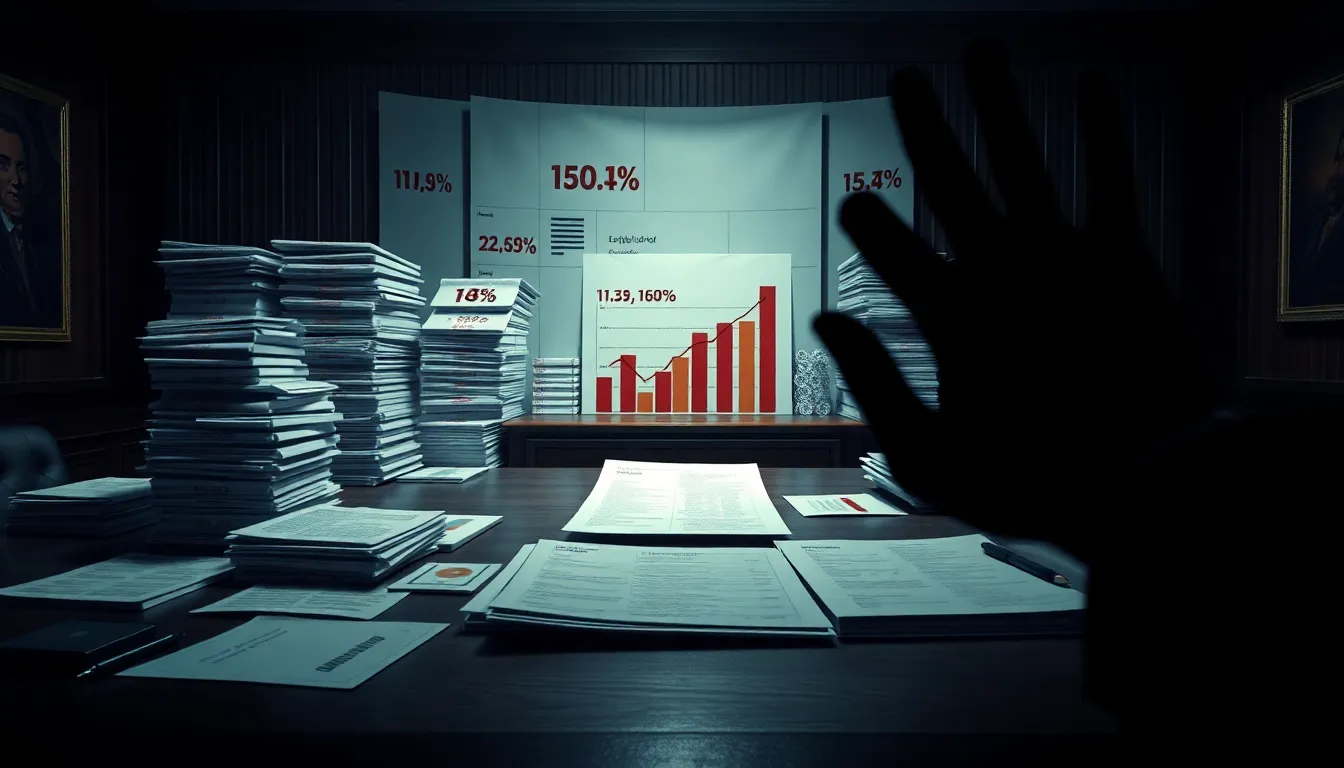The health care industry’s lobbying spree reached unprecedented levels in 2025, driven by policy uncertainty and a desire to shape regulatory landscapes. This intense activity saw major trade groups and individual companies dramatically increase their investments, far exceeding previous benchmarks.
Policy Influence and Fiscal Impact:
The health care industry’s record lobbying aims to shape regulatory landscapes, potentially influencing policy and resource allocation, as CMMI consistently fails cost-saving mandates, increasing federal spending by billions.
Public Demand for Accountability:
Widespread public dissatisfaction stems from CMMI’s documented financial inefficiencies, including a $5.4 billion increase in federal spending over the past decade, driving strong voter demand for congressional safeguards and elimination of ineffective programs.
Strategic Industry Engagement:
Unprecedented financial commitments from major health care trade groups, insurers, and pharmaceutical companies in 2025 signify a proactive, industry-wide strategy to safeguard commercial interests and influence legislative outcomes amidst evolving policy environments.

Health Care Industry’s Lobbying Investments Surpass Previous Annual Records by Millions
The health care sector experienced a significant escalation in its efforts to influence policy during 2025, driven largely by policy uncertainty and inherent financial risks. Major health care trade groups and individual companies alike dramatically increased their lobbying investments, with several entities reporting record or near-record expenditures. This intense activity highlights a broad industry-wide effort to shape regulatory landscapes and legislative outcomes as private equity regulation and other policy changes gain traction.
This surge in spending reflects a proactive stance by the industry to safeguard its interests. The scale of these investments in 2025 far outstripped previous benchmarks, signaling a critical period for health care stakeholders. Such unprecedented financial commitments underscore the strategic importance placed on government relations during times of legislative flux.
Unprecedented Spending by Trade Groups and Insurers
Main health care trade groups, encompassing representatives for drugmakers, hospitals, and insurers, collectively reached new highs. Their combined lobbying expenditures in the third quarter of 2025 exceeded any previous third quarter on record. This collective investment demonstrates a unified industry front in responding to potential policy shifts and market pressures.
Among these groups, AHIP, the prominent trade association for health insurers, exhibited remarkable growth in its lobbying activities. During the first nine months of 2025, AHIP spent $13.1 million on lobbying efforts. This figure is particularly striking because it surpassed AHIP’s total lobbying expenditures for the entirety of 2024. This rapid acceleration in spending indicates a focused push to influence legislation and regulation.
Individual insurance giants also significantly ramped up their investments. UnitedHealth, a dominant player in the insurance market, reported spending $9.2 million on lobbying through September 2025. This amount represents a new benchmark for the company, surpassing its total lobbying tallies for any previous full year over the last decade. Such substantial investments reflect a clear strategy to navigate complex policy environments, including debates around ACA subsidies and other market mechanisms.
Pharmaceutical Companies Drive Record Lobbying
The pharmaceutical sector also contributed significantly to the health care industry’s lobbying spree. Pharmaceutical company Eli Lilly made a substantial financial commitment, spending $8.4 million on lobbying through September 2025. This investment underscores the company’s intent to play a pivotal role in shaping pharmaceutical policy and market access.
Other major drugmakers, Gilead and Regeneron, also demonstrated aggressive lobbying strategies during the July through September quarter of 2025. Gilead spent $2.78 million, while Regeneron allocated $570,000 to lobbying activities within this three-month period. For both companies, these expenditures marked their second-highest quarterly spend on record. The consistent, high-level spending across diverse segments of the health care industry highlights a coordinated and sustained effort to influence political decisions.
These record-breaking expenditures by individual pharmaceutical firms, alongside the collective efforts of trade groups, showcase the breadth of the health care industry’s lobbying spree. It signifies a robust and well-funded campaign aimed at protecting commercial interests and influencing public health policy. The sustained increase in investment across insurers, drugmakers, and hospitals reflects a strategic response to evolving political landscapes and economic challenges facing the sector.

CMMI Projected to Increase Federal Spending by $1.3 Billion, Public Approval at 33%
The Center for Medicare and Medicaid Innovation (CMMI) faces escalating criticism for its consistent failure to achieve mandated cost-saving goals. This oversight has resulted in billions of dollars in increased federal spending. Consequently, there is strong voter demand for congressional safeguards and the elimination of ineffective programs. These failures occur even as the health care industry’s lobbying spree often influences policy, potentially diverting attention from the fiscal responsibility needed in agencies like CMMI.
CMMI’s Financial Shortcomings: A Decade of Discrepancy
Recent projections from the Congressional Budget Office (CBO) highlight CMMI’s ongoing financial inefficiencies. The CBO projected in 2023 that CMMI is set to increase federal spending by $1.3 billion between 2021 and 2030. This forecast stands in stark contrast to the agency’s original mandate to reduce healthcare costs.
Even more troubling is CMMI’s track record over the previous decade. The agency added an alarming $5.4 billion to federal spending during this period. This outcome is a significant divergence from the CBO’s optimistic 2010 estimate, which projected that CMMI would cut spending by approximately $3 billion. Such a substantial reversal from anticipated savings to actual spending increases raises serious questions about CMMI’s operational effectiveness and accountability.
These documented financial inefficiencies fuel calls for greater oversight and reform within government. The public and various congressional factions are now pressuring CMMI for increased accountability, questioning how an agency designed for savings could instead contribute to such considerable federal expenditures. This situation underscores the broader challenges in managing public funds, particularly when the health care industry’s lobbying spree actively shapes legislative priorities and resource allocation within the sector.
Public Dissatisfaction and the Demand for Reform
Public opinion polls strongly reflect widespread dissatisfaction with CMMI’s performance and budget. A national poll of 1,600 registered voters, conducted online between October 8 and 12, 2025, revealed striking insights. Only about 33% of voters approve of CMMI’s $10 billion-per-decade budget. This low approval rating clearly illustrates public doubt regarding the agency’s financial management and its perceived value.
The same comprehensive voter poll also indicated a strong desire for substantial reform. A clear majority of American voters believe that payment models tested by CMMI that consistently fail to generate savings should be eliminated. This sentiment translates into a powerful demand for congressional action. Voters expect robust safeguards to prevent future financial losses and ensure public funds are used effectively. This public pressure is a critical factor driving legislative discussions around regulation in health care and accountability.
The consistent failure of CMMI to meet its cost-saving objectives, coupled with strong public opposition to its budget, creates an undeniable imperative for change. This highlights a disconnect between the agency’s operations and the expectations of taxpayers, who fund its programs. The public’s clear call for the elimination of ineffective models signifies a desire for more transparent and results-driven governance in healthcare innovation.
Towards Accountability: Winding Down Ineffective Models
Recognizing the mounting pressure, there are already concrete plans to address some of CMMI’s less effective initiatives. The Trump administration, for example, plans to wind down several CMMI models by the end of 2025. The Centers for Medicare & Medicaid Services (CMS) anticipates these specific actions will result in an estimated $750 million in savings. This move, while a positive step, only partially offsets the billions in increased spending previously incurred.
This proactive unwinding of failed models demonstrates a growing commitment to fiscal responsibility. It suggests that, despite the pervasive influence of the health care industry’s lobbying spree, there is an increasing recognition of the need to prioritize programs that demonstrably deliver value. The expectation is that future administrations will continue this trend, rigorously evaluating and discontinuing programs that do not align with CMMI’s original cost-saving mission.
Ultimately, the escalating criticism, documented financial inefficiencies, and clear public demand for accountability necessitate comprehensive reform for CMMI. Moving forward, a stronger emphasis on measurable outcomes, strict adherence to cost-saving mandates, and a willingness to eliminate underperforming models will be crucial to restore public trust and ensure the agency truly serves its purpose of innovating for a more efficient and affordable healthcare system for all Americans, including those insured at risk.
Featured image generated using Flux AI
POLITICO PULSE: “The health care industry’s lobbying spree”
